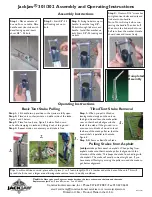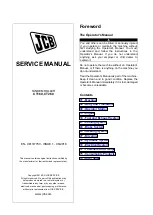
6
Transferring patient from bed to
chair, wheelchair, or toilet
Step 1
Position sling under patient
1) Log roll the patient on his/her side away from
you. (See Figure 4)
2) Position the sling so the handles on the back of
the sling are facing the mattress. Tuck half of
sling underneath patient.
3) Using the center handle (4 on Figure 3 Sling
Diagram) as a guide, center the sling on the
patient’s spine with the base of the sling
approximately two inches below the base of the
tailbone.
4) Log roll patient in opposite direction and pull
rest of sling out the other side.
5) Lay patient on their back. Make sure the sling is
centered beneath the patient.
6) Lift patient’s left thigh and pull the left sling leg
(6L on Figure 3 Sling Diagram) of the sling
under patient’s thigh. Then place excess sling leg
over the top of the patient’s left thigh.
7) Repeat above step for right thigh. (See Figure 5)
NOTE: If the patient’s legs are extremely rigid, it
may work better to bring the left sling leg under
the right thigh and the right sling leg under the left
thigh instead of threading between the patient’s legs.
The patient must have good torso stability to use
this method and the caregiver must be sure that the
back of the sling is positioned properly behind the
patient’s back and under their tailbone to provide
support. (The top of the sling must reach just above
the patient’s shoulders and the base of the sling
should be 2 inches below their tailbone.)
Step 2
Moving the lift to the patient
1) Make sure there are no cords or other objects
near the path of the lift or under or near the bed
that could obstruct the wheels of the lift.
2) Do not lock the wheels of the EZ Way Smart
Lift
®
when lifting or transferring patients.
3) Move the EZ Way Smart Lift
®
until the tip of
the boom (green nose cone) is centered over the
patient’s torso.
4) Turn the hanger bar spreader so the two sling
hanger bars are parallel to the patient’s body and
the sides of the bed.
5) Using the “Down” button, lower the boom so
it is positioned a few inches over the body of the
patient. The goal is to provide for ease of sling
attachment (Step 3).
Step 3
Attaching the sling to the lift
1) Attach the loops nearest the patient’s
shoulders, to the hanger bar hooks of the lift
nearest each shoulder using the same length
and color of loop strap on each side. (See Figure
3 Sling Diagram)
2) Take the sling leg lying over the left leg, cross it
over and attach it on the hook of the hanger bar
located on the right side of the patient.
3) Next, take the sling leg lying over the right leg,
cross it over and attach it on the hook of the
hanger bar located on the left side of the patient
using the same length and color of loop strap on
each sling leg. (3B on Figure 3 Sling Diagram)
4) Make a final check of all four loop attachment
points to ensure each loop is sufficiently attached
to the respective hook of the hanger bars. Patient
is now ready to be lifted. (See Figure 6)
NOTE: If you have gone under both legs with the
sling legs for a rigid patient, bring the loops straight
up along the outside of the legs and hook on the
Figure 4 - Log roll patient
Figure 5 - Place sling leg over patient’s thigh
Summary of Contents for Smart Lift
Page 19: ...19...






































